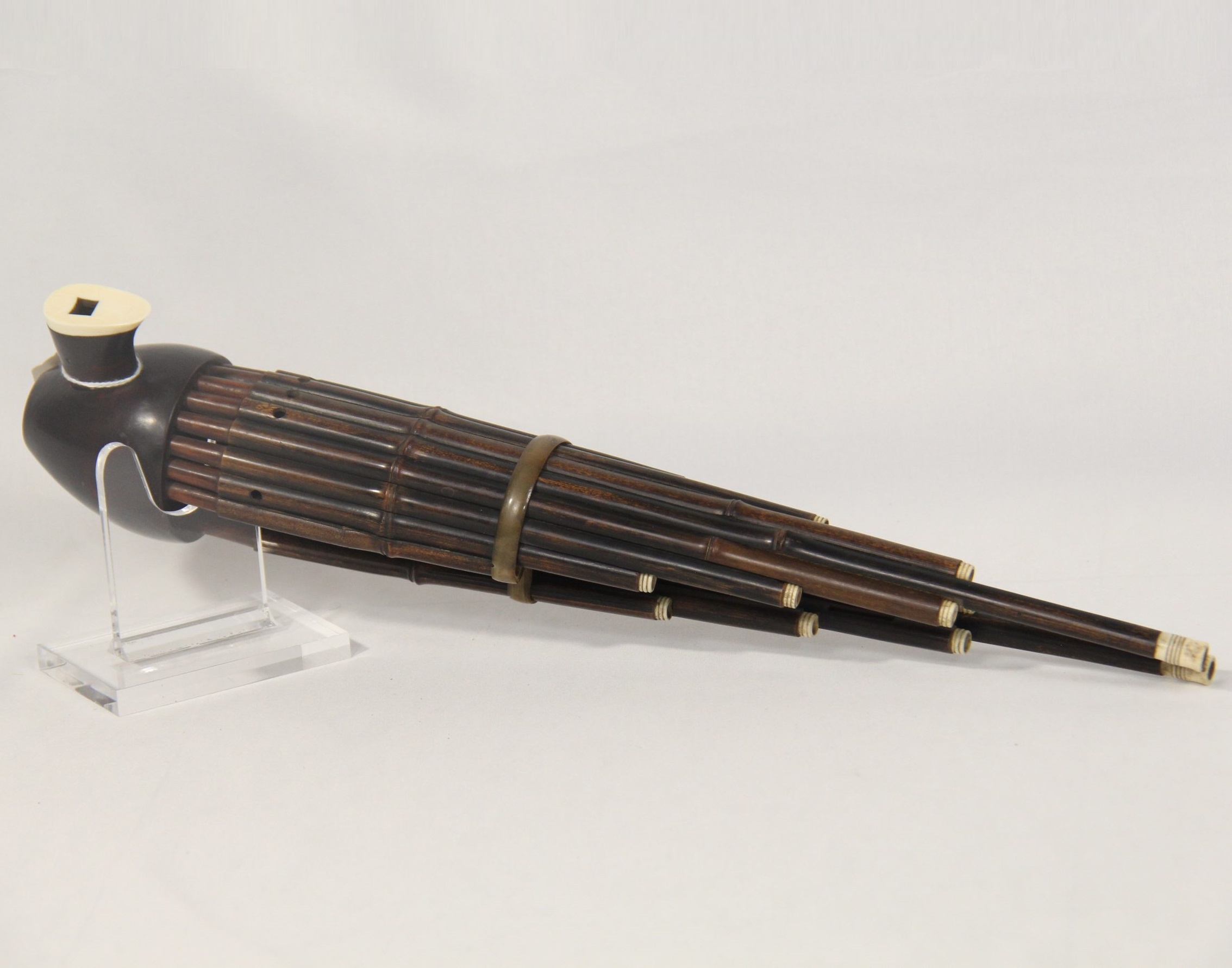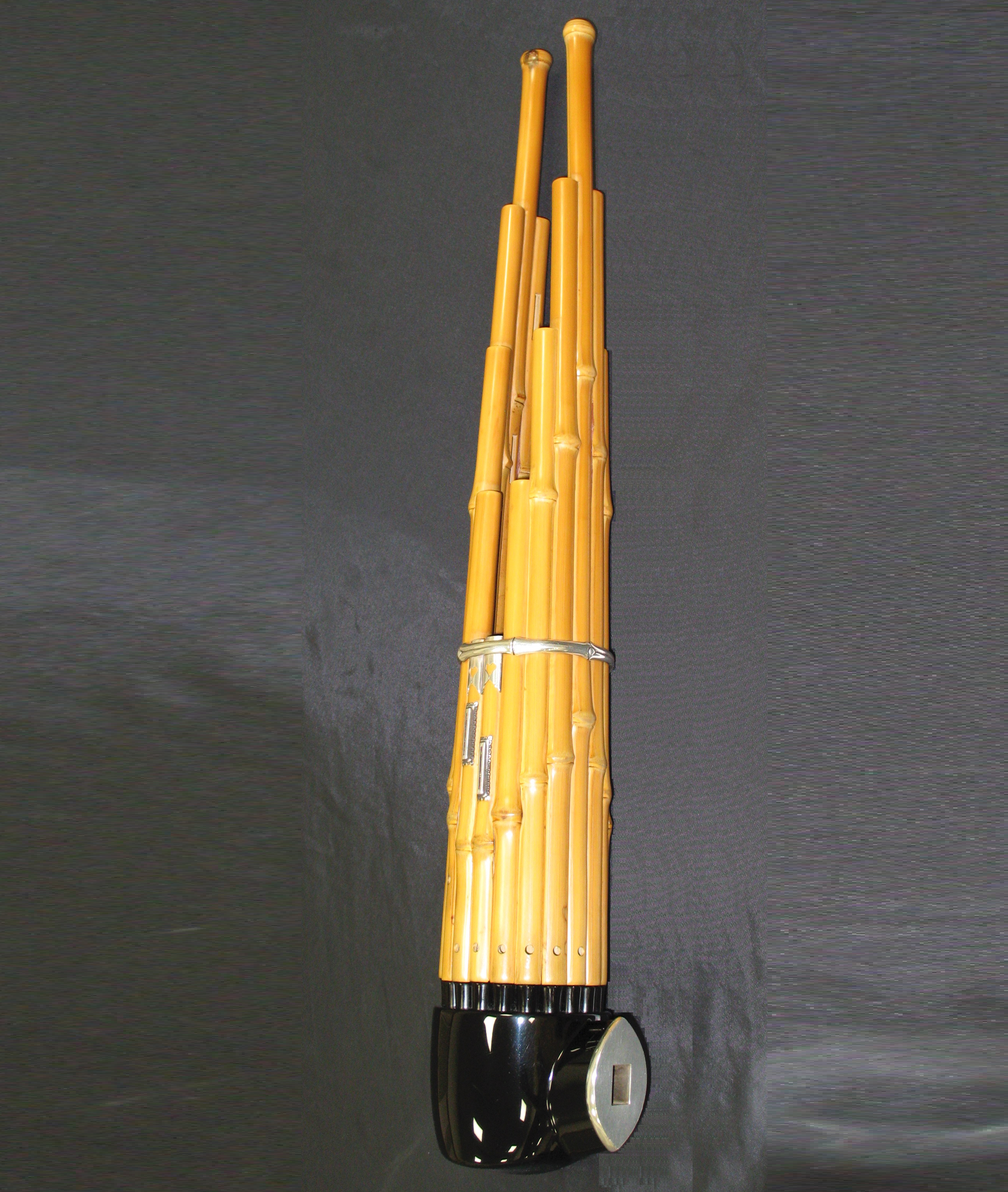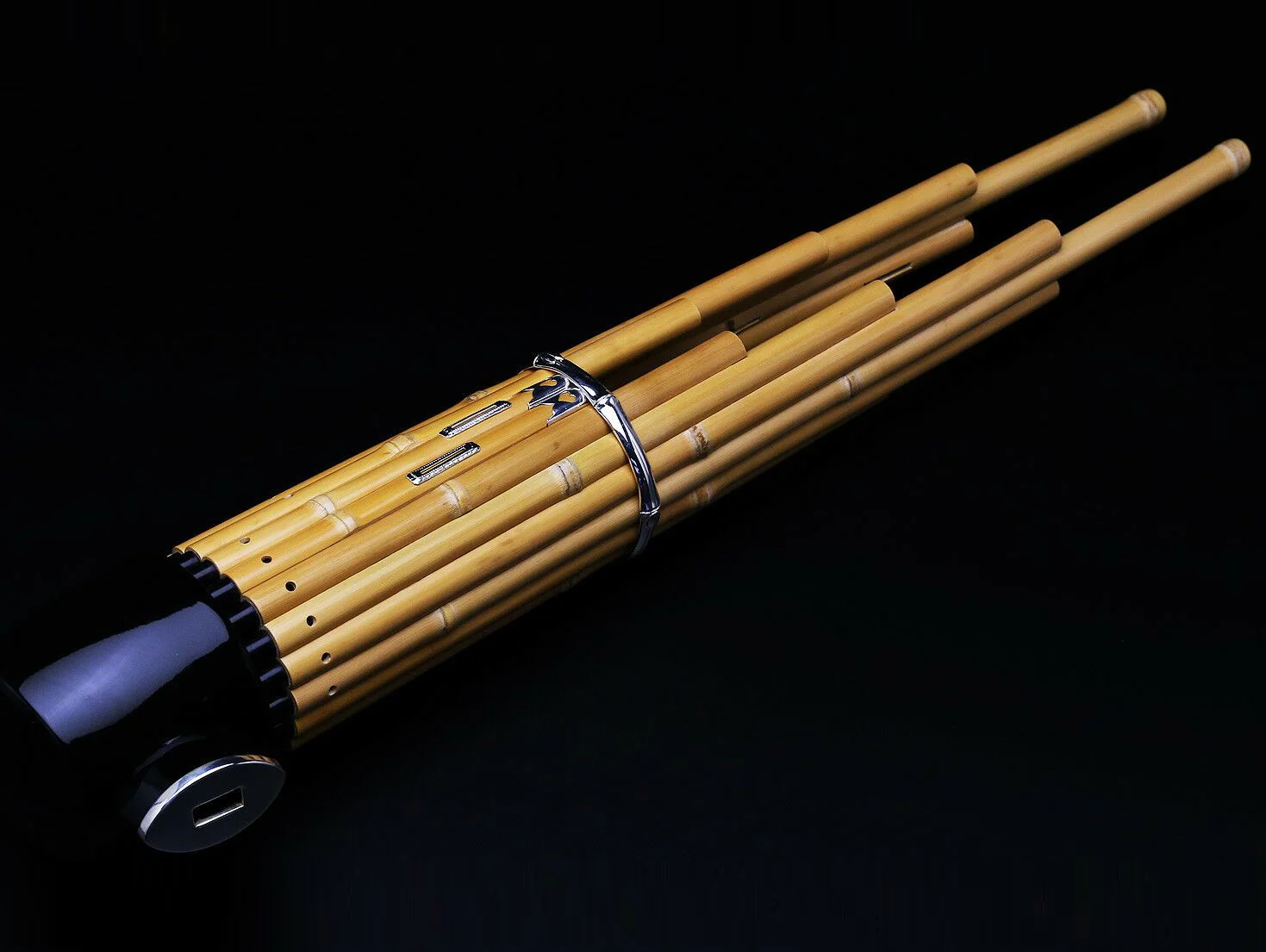Shō
Woodwinds
Asia
Between 1001 and 1900 AD
Video
The shō is a traditional Japanese mouth organ, recognized for its ethereal and harmonically rich sound. It plays a crucial role in gagaku, the classical court music of Japan. With a history rooted in China’s sheng, the shō has become an iconic part of Japanese culture, used both in classical performances and modern musical explorations.
Origins and History
The shō is a traditional Japanese free-reed wind instrument that originated from the Chinese sheng. It was introduced to Japan during the 8th century (Nara period) as part of Gagaku, the imperial court music tradition. The instrument traces its roots back to Asia, specifically China, where its predecessor, the sheng, had been in use for centuries. The shō is made of 17 bamboo pipes of different lengths, arranged in a circular pattern and attached to a metal base with a mouthpiece. It produces soft, ethereal tones and is known for playing sustained chords, called aitake, which create rich harmonic textures. The instrument has remained a key part of Japanese classical music and continues to be used in both traditional and contemporary compositions.
Structure and Design
The shō consists of 17 slender bamboo pipes attached to a wooden wind chamber. Each pipe contains a metal free reed that vibrates when air is blown or drawn through the instrument. Notably, two of the pipes are silent, preserving aesthetic symmetry rather than contributing to the sound.
Key components of the shō include:
- Bamboo Pipes: 15 functional pipes, 2 silent ones
- Reeds: Metal reeds within each active pipe
- Wooden Wind Chamber: Usually made of lacquered wood
- Mouthpiece: Positioned at the base of the wind chamber
Playing Technique
The shō is played by holding it upright and exhaling or inhaling through the mouthpiece. Unlike many wind instruments, the shō produces sound on both exhalation and inhalation, allowing for continuous sound.
A key feature of shō playing is harmony production. The instrument plays clusters of notes (aitake) rather than single tones, creating its distinctive shimmering resonance.
Breathing Techniques
Ro (Continuous Sounding): Producing sound by steadily blowing and drawing breath
Hikibuki (Alternating Breath): Alternating between inhaling and exhaling
Aitake (Chord Clusters)
The shō’s notes are grouped into predefined harmonic structures, contributing to the unique harmonic language of gagaku. These aitake are Ichi no Aitake, Ni no Aitake, San no Aitake, and Shi no Aitake, etc.
Role in Gagaku Music
The shō holds a melodic and harmonic function in gagaku, providing sustained chords that complement other instruments. Gagaku orchestras typically feature two to three shō players, ensuring a continuous sound. It supports the melodies played by hichiriki (double-reed flute) and ryūteki (transverse flute).
Common Repertoire
Etenraku – One of the most famous gagaku pieces
Banshikichō – Another staple in the classical repertoire
Modern and Contemporary Uses
In modern and contemporary music, the shō has expanded beyond its traditional role in Gagaku (Japanese court music) and is now used in diverse musical settings. Contemporary composers have integrated the shō into experimental, electronic, and orchestral compositions, exploring its unique ability to produce sustained harmonies and ethereal textures. Musicians such as Mayumi Miyata have played a key role in introducing the shō to global audiences, collaborating with composers like Tōru Takemitsu, John Cage, and Björk.
The instrument is also used in film scores, ambient music, and avant-garde performances, blending traditional timbres with modern soundscapes. Some experimental musicians even amplify or electronically process the shō’s sound, creating atmospheric and meditative effects. Its ability to sustain multiple notes simultaneously makes it a valuable instrument for contemporary harmonic exploration, bridging ancient traditions with modern innovation.
Maintenance and Care
The shō requires careful maintenance to ensure its delicate bamboo pipes and internal reeds remain in good condition. Since moisture from breath can damage the reeds, players must regularly dry the instrument after use by gently warming it over a low heat source, such as a small charcoal brazier. This prevents condensation from warping the reeds and affecting sound quality. Additionally, the shō should be stored in a protective case to avoid exposure to excessive humidity or temperature changes. Regular inspections and occasional reed adjustments by skilled craftsmen help maintain its tuning and longevity.
The shō requires meticulous care, especially for its delicate bamboo pipes and reeds. Proper maintenance involves:
- Regular Drying: Prevents condensation buildup inside pipes
- Seasonal Adjustments: Humidity affects bamboo and reeds
- Reed Maintenance: Occasionally tuning and adjusting reeds
The shō is an enduring symbol of Japanese musical heritage. From ancient court performances to contemporary experimental music, its presence continues to inspire musicians worldwide. With its unique harmonics and deep-rooted tradition, the shō remains an integral part of Japan’s rich cultural landscape.
Influences
The shō has had a significant influence on both Japanese and Western music. In traditional Gagaku court music, its unique sustained chords (aitake) create a rich harmonic atmosphere, influencing Japanese compositional techniques. Its influence extends to modern experimental and contemporary classical music, inspiring composers like Tōru Takemitsu and even Western musicians exploring new textures and harmonies. The shō’s harmonic capabilities have also influenced electronic and ambient music, where its ethereal sound is sometimes mimicked through synthesizers and digital instruments.
FAQ
What type of musical instrument is the Shō?
The Shō is a Japanese free-reed mouth organ, part of the aerophone family. It consists of 17 bamboo pipes, each fitted with a metal reed. Based on the Chinese Sheng, it produces a soft, harmonized sound. The instrument is commonly used in traditional Gagaku court music.
How is the Shō used in musical performances?
The Shō is primarily used in Gagaku, Japan’s ancient court music. It plays sustained harmonies called "aitake," creating a floating, ethereal atmosphere. Performers inhale and exhale to maintain continuous sound. It often accompanies other instruments like the hichiriki and ryūteki.
What types of music feature the Shō?
The Shō is a key instrument in Gagaku, the traditional music of the Japanese imperial court. It also appears in contemporary compositions blending Eastern and Western elements. Some experimental and avant-garde musicians incorporate it into modern works. Its distinct sound enhances meditative and atmospheric pieces.
 Links
Links
References
Other Instrument
Categories




















